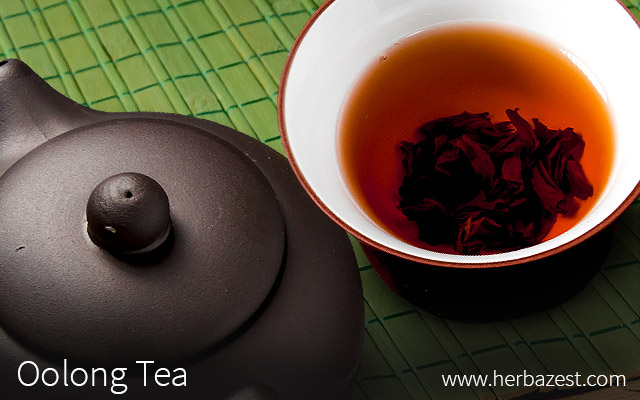Comparing to the long-lasting Chinese tradition of drinking tea, which spans over four centuries, oolong tea is a relatively new discovery. The story about its invention is not certain, and it has become the theme of several legends; however, oolong tea is believed to have originated in China roughly 200-400 years ago. Although it is much less recognized in the West than other tea types, it continues to be the most popular beverage in China and Taiwan, which are also its biggest producers.
What is Oolong Tea?
Oolong is also spelled wu long , which means “black dragon” in Chinese, and it is one of the six types of tea, produced from the leaves of the tea plant, Camellia sinensis. What differentiates it from other true teas is the processing method. This is a partially oxidized tea, and its flavor profile falls in between green tea's soft scent and the strong aroma of dark varieties, such as Darjeeling tea.
The qualities of oolong are attributed to tea plants being grown at high altitudes, with cooler temperatures, but location is not the only factor capable of altering its characteristics. Various oxidation levels can result in different varieties, each one with a different flavor and set of medicinal properties.
OLD AND WELL DRIED OOLONG TEA LEAVES HAVE BEEN REPORTED TO HAVE BETTER FLAVOR AND MORE HEALTH BENEFITS THAN FRESHER VARIETIES.
Additionally, a skillful rolling of the tea leaves into their characteristic curled, brownish-green strands or tight balls is believed to dictate the final taste and aroma of oolong tea. In fact, rolling tea leaves is also considered an art and the main aspect of many tea competitions throughout Asia. Oolong is also a central part of the elegant Gongfu tea ceremony, performed in China since the 18th century.
Oolong Tea Benefits
Many oolong tea benefits are shared by other types of tea, particularly black and green tea. It contains catechins, which are powerful antioxidants that play a role in the prevention of heart diseases, contribute to weight loss, and strengthen the immune system.
Oolong tea has also shown to improve the gastrointestinal flora and increase bone density. People who regularly drink it report an overall state of calmness and a reduction of stress levels, as well as improvements in memory and brain function.
Additionally, wu long tea has been found useful to treat skin conditions, such as eczema and atopic dermatitis, as well as for decreasing the risk of developing age-related dark spots.
How to Make Oolong Tea
The first time drinkers should remember that oolong tea health benefits and taste might differ across different varieties, including black and green oolong tea, so it is a good idea to experiment with different brands in order to find the preferred type. It is easy to buy oolong tea online, where the options range from loose leaf tea to tea bags.
Oolong tea is generally brewed by adding three tablespoons of loose leaves to eight ounces (240 mL) of water at 200°F (93°C) and steeping it from one to three minutes, depending on the variety. Good quality oolong tea can be re-steeped several times, and it is said to give off a new flavor with each brew.
Sources
- Health Effects of Tea and Its Catechins
- Journal of epidemiology and community health, Coffee, green tea, black tea and oolong tea consumption and risk of mortality from cardiovascular disease in Japanese men and women, 2011
- Tea in Health and Disease Prevention
- Tea: Bioactivity and Therapeutic Potential
- The Journal of Nutrition, Oolong tea increases metabolic rate and fat oxidation in men, 2001




